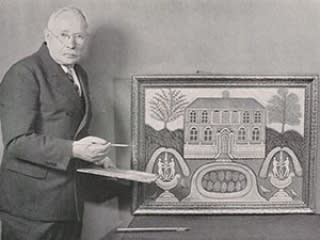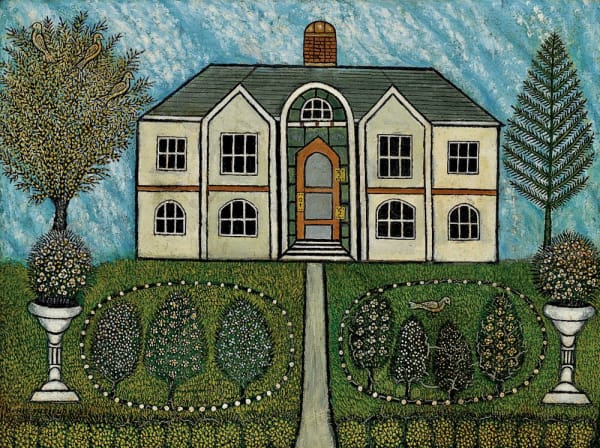Morris Hirshfield Polish-American, 1872-1946
Morris Hirshfield was a classic American Outsider Artist, whose vivid, formally inventive paintings earned him unprecedented notoriety in America in the late 1930s. Born in Poland in 1872, Hirshfield was known to have carved a sculpture for his synagogue, the only record of his art activity before he emigrated to the United States at the age of 18. He settled in New York City, and worked in a women’s coat factory before going into business with his brother. They initially designed and manufactured women’s coats, but would go on to become a leading manufacturer of women’s slippers. Hirshfield retired in 1935, as a result of increasing health problems.
Not one to remain idle, Hirshfield began to paint, favoring oil on canvas. He devoted most of his attention to painting young women, portraying them in domestic, or otherwise intimate settings. He also painted both wild and domestic animals. His monumental figures typically occupy the center of each composition, and although hauntingly static, also radiate an uncanny visual energy. Hirshfield’s women are often presented in meticulously styled dresses, and when depicted nude, they are foregrounded by richly layered backdrops, or inventive framing devices. His animals loom in quasi-natural settings that dissolve into abstraction. Although by his own admission, the artist intended to paint common themes, the results were inevitably fantastical.
Hirshfield’s self-taught penchant for abstract figuration and radically flattened compositions soon drew the attention of modern art aficionados. New York dealer and curator Sidney Janis was instrumental in bringing Hirshfield to the attention of the artworld. MOMA included two of his paintings in a group show in 1939, and honored him with a solo show in 1943. Loved by modernists for his self-taught innovation, he might best be remembered as the American Henri Rousseau.
- Jenifer P. Borum

